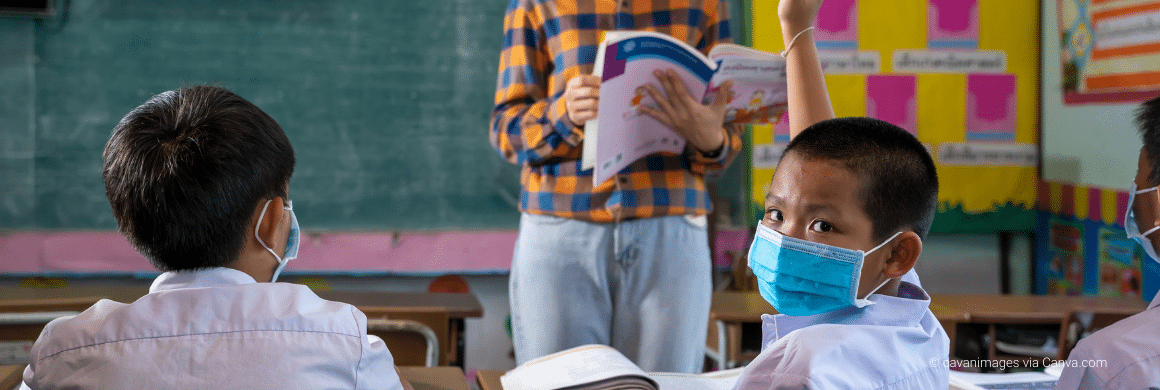By Kate Matlin, Public Health Associate
Since public health stay-at-home orders were announced in Colorado due to the COVID-19 pandemic in March 2020, fewer parents have been taking their children to routine well-child visits. As a result, Colorado’s already-low vaccination rates dropped even further in early 2020. (For reference, during the 2018-19 school year, Colorado already had the lowest-in-the-nation rate for kindergarten MMR (measles, mumps and rubella) vaccination at 87.4%.) Compared to the number of doses delivered from January to March 15, 2020, doses delivered after March 15 to May were 31% lower for children 0-2 years, 78% lower for 3-9 years, and 82% lower for 10-17 years of age. Although vaccination rates have improved since this initial drop, they have not returned to pre-pandemic levels. And as disease prevention measures gradually ease up over the next year and kids head back to in-person learning, low vaccination rates could leave children vulnerable to diseases like measles.
In fact, an Immunize Colorado analysis of data from the 2019-20 school year shows that in the case of a measles outbreak, nearly 45,000 Colorado students would potentially be excluded from school for up to 21 days due because they’ve either claimed an exemption to the MMR vaccine (26,830 students) or have an incomplete or missing MMR vaccination record on file (17,834).
2019 was an exceptionally bad year for measles outbreaks, with 1,282 cases reported in the U.S. alone, nearly quadrupling the case count from the year before (see Figure 1 below). Of these measles cases, 89% were in unvaccinated children or children with unknown vaccination status. In 2020, there were only 13 measles cases reported, likely due to the prevention measures taken to slow the spread of COVID-19 like mask wearing. But with the decline in routine vaccination rates over the past year, it’s likely the number of potential measles exclusions jumped even higher during the 2020-21 school year, and that measles cases could return at high levels.

As schools prepare to return to in-person learning, it will be critical to ensure kids are up-to-date with routine vaccinations. Additionally, COVID-19 vaccinations could soon be available to school-aged children. Pfizer and Moderna are currently testing their COVID-19 vaccines in children 12 and older and Johnson & Johnson, Novavax, and Astrozenca are planning to do the same. Currently, the CDC recommends waiting two weeks between getting a COVID-19 vaccine and any other routine vaccine, like the Tdap and meningococcal vaccines. Since COVID-19 vaccines will be an important tool for getting schools back to in-person learning, parents and caregivers should aim to vaccinate their kids with other recommended vaccines early to ensure they get all these vaccines – and possibly one for COVID-19 – before the start of the school year. To mitigate risks of additional disease outbreaks in 2021 and beyond, child health care providers can prioritize scheduling well-child visits and vaccine appointments for their patients – and parents can call their child’s provider to schedule them – this spring, before the inevitable back-to-school rush.
The bottom line? Don’t delay getting kids vaccinated this year. Provider offices continue to take important steps to keep patients and families safe during in-person medical visits. Parents can call their child’s provider to see what measures their clinic has implemented and ask any questions they have about vaccination or other routine care for their child.
Visit www.immunizecolorado.org to find a vaccination provider near you.
Check out Immunize Colorado’s measles exclusions data dashboard.

